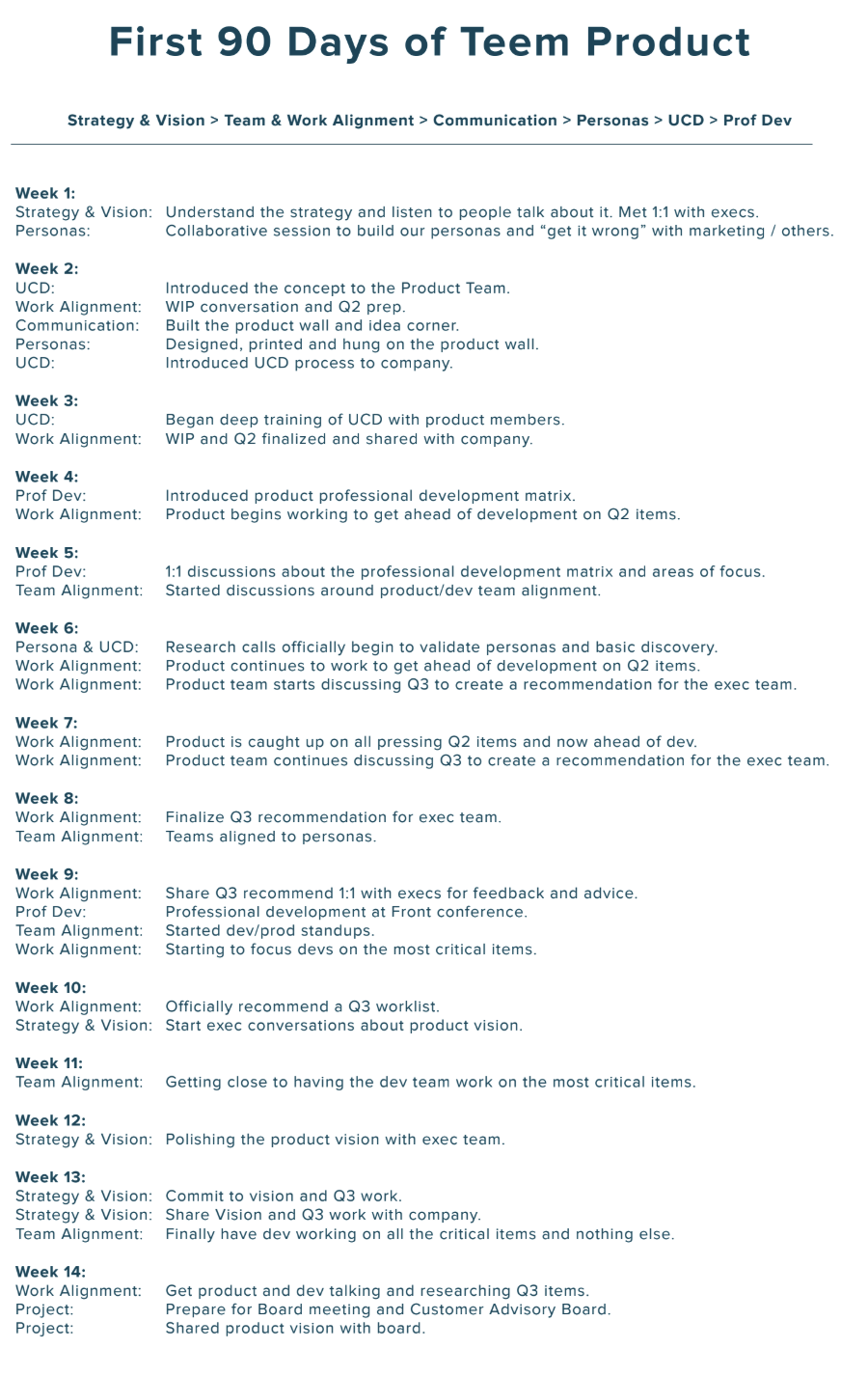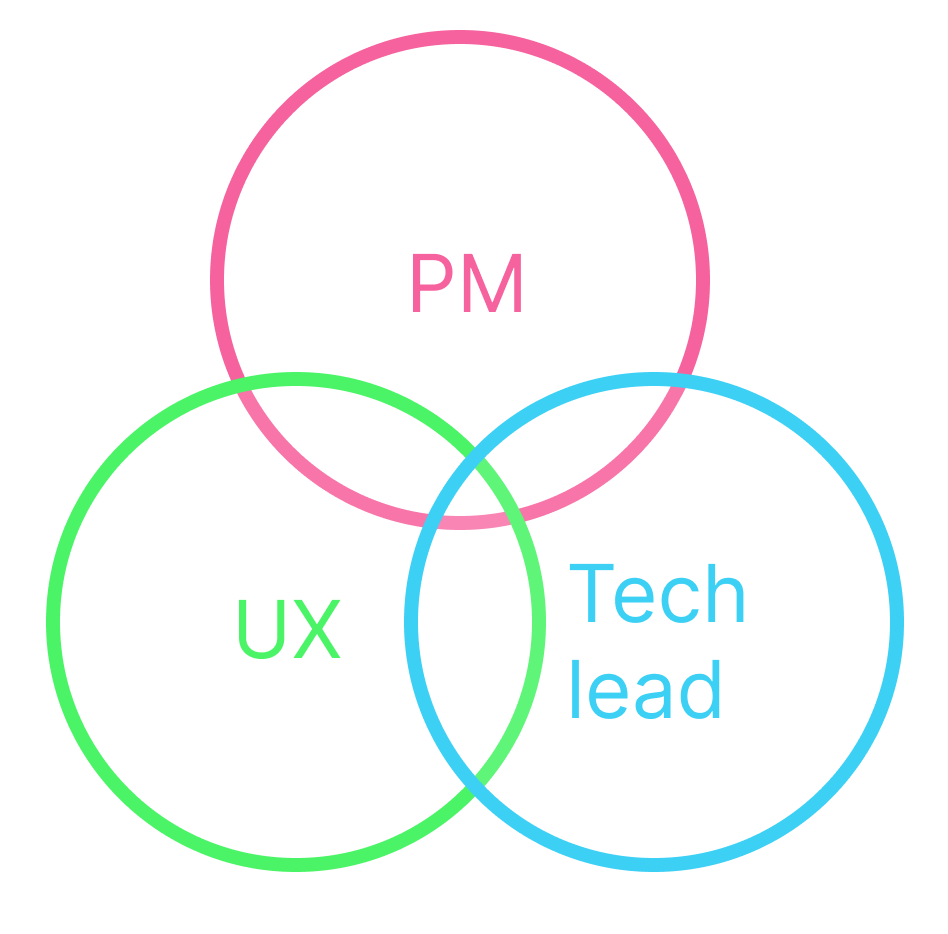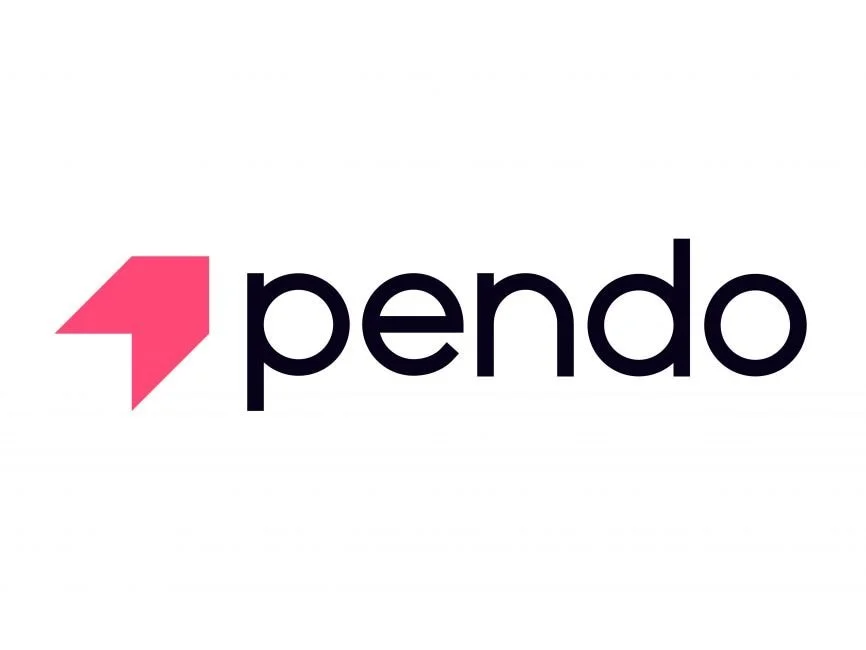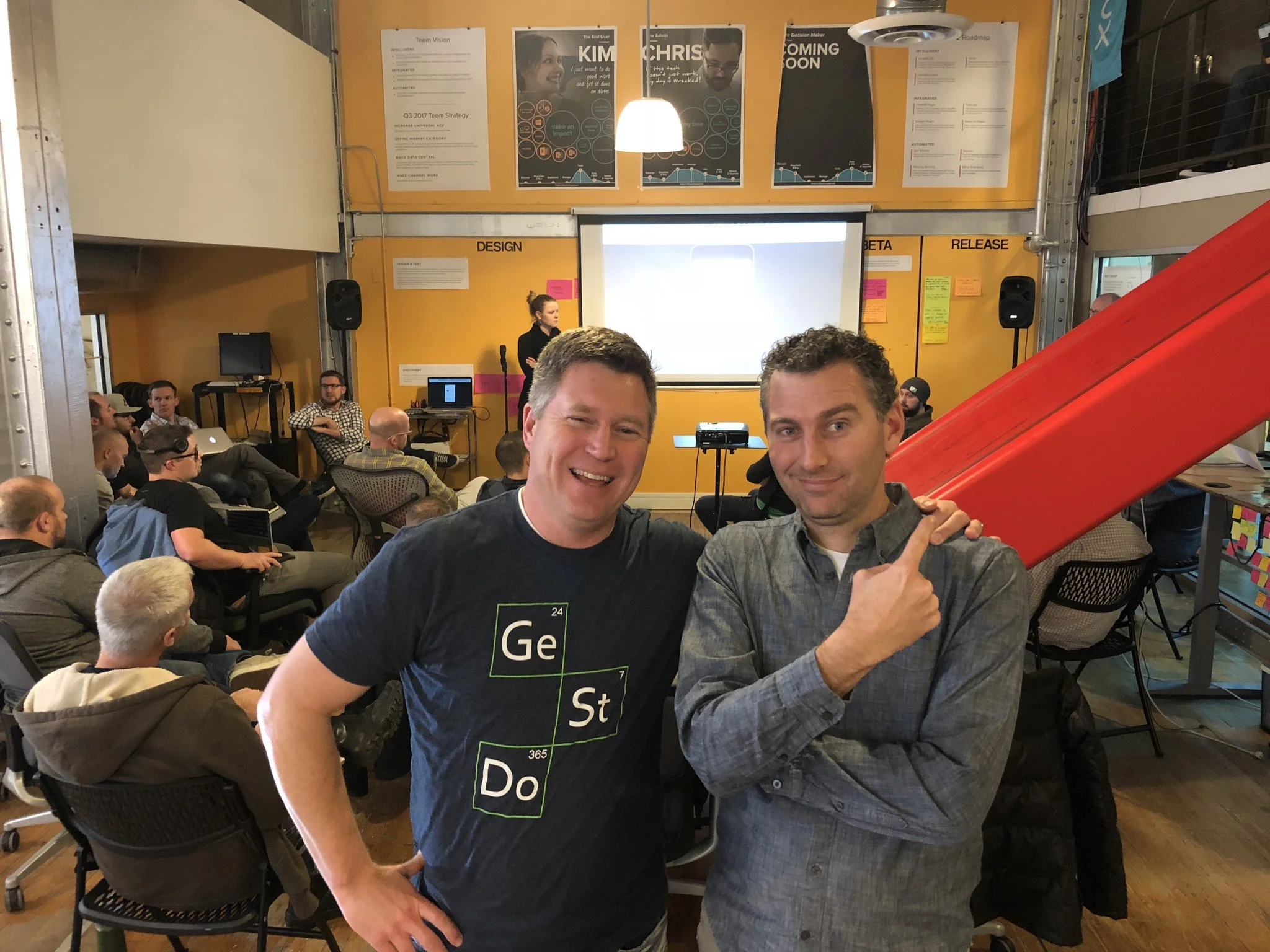Teem was a high-growth VC backed company which provided workplace technology and analytics serving enterprise tech firms. My role at Teem was in company leadership where I led a team of product managers, user experience designers and product marketers with a goal to turn around performance and grow the team. Teem sold to WeWork in September of 2018.
Case Study
Teem’s flagship product, Eventboard
I started to interact with Teem leadership in late 2016 when the CEO contacted me to discuss a role leading their product group. Their stated need was developing a product team with an emphasis on user research and design processes.
At the time, Teem was doing about $10m in ARR with rapid growth. They had grown quickly in the Bay Area particularly with enterprise tech companies like Lyft, Box and LinkedIn.
Setting the scene
During my interview process I met with people across the organization including the entire leadership team and key members of the product and development group. My initial learnings were:
Hitting revenue wasn’t a problem but delivering on the roadmap was a real challenge
Product and development were seen as the primary source of pain and there was concern it would hold back additional growth
There was a need for more research and better design practices
First impressions
After starting, I realized the issues at Teem were more significant than just establishing better research and design practices. In fact, that was the least of their concerns because the organization needed more focus on strategy and to rebuild trust among the organization. After 30 days, I identified several challenges:
Organizational trust was broken, particularly between sales and product development
The lack of company strategy led to impossible expectations; the product development team was tasked with 5x their capacity
Lack of sound processes resulted in poorly delivered solutions and the product team lacked organization and focus
Given the number of the company objectives, the product team was under-resourced and lacked professional development plans
Communication about progress and release predictability wasn’t possible
Before I started, I drafted a 90 day plan to guide me and gain a better understanding of the challenges of the organization. This plan was developed based on the specific needs of Teem. The approach was to:
Observe the first 30 days
Plan the next 30 days
Execute the final 30 days
90 day plan
Re-establishing trust
I discovered there was a complete breakdown in trust between sales and product development. Sales was closing deals and hitting revenue goals but product development was falling short of delivering the roadmap. Compounding this, emotions were high. Many of my teammates openly shared frustration which added more pressure to an already difficult situation.
I realized I needed to do two things: 1) build empathy with those in the organization who were relying on product development and 2) ask the product development team to trust that I would protect them while they tried to build the most critical projects.
Most importantly, I needed to maintain my integrity. The sales team's frustration was palpable; evident in all their interactions and feedback. I didn’t need to get caught in arguments that pre-dated me. Staying professional and acting with integrity was the order of the day and delivering the first project on time and with high quality was critical.
I began the process of building trust with sales. This wasn’t a small task and it wasn’t going to happen overnight. So I created open dialogue between myself and the sales team at every possible opportunity. This included meeting regularly, joining customer calls and eating meals with the team. I may have spent just as much time with the sales team as I did with the product team in the first 30 days.
The intent was to lean into their world, understand their challenges and gain empathy. With this approach, I was not only able to build trust but I was able to objectively report back to the product development team. After having exposure to the sales challenges I was able to compare the roadmap (which existed before I arrived) to what I was seeing. This afforded me the opportunity to challenge the roadmap but more importantly the work in progress (WIP) which was way too much given our resourcing.
Finally, I championed an improved roadmap decision making process and cadence which required the leadership to make difficult trade-offs when it came to priorities. We had a too much WIP and that was painfully obvious my first day when I learned we had 31 active projects and only 33 software engineers.
The outcome:
Tempers started to cool 😎
I was building trust with the sales team 🤝
The sales team felt energized 🤑
I was able to improve the critical process of prioritization (every 90d) 🔂
I gained some breathing room for the product development team 🧘
Building empathy
Building process and expecations
Next, we focused on process and organization. I was able to get the business to agree to a roadmap cycle which protected the product development team and reduced our overall WIP but we needed to improve ourselves (product development).
The first effort was to was to organize into teams with complimentary skill sets. This included product managers, designers, tech leads and software engineers who had skills necessary for the mission of each team.
We created 5 teams which were aligned to the product offerings of Teem and gave them a single priority to execute.
Next, I started to rally the team and create a sense of urgency. This was risky because the team I was trying to rally was as still licking it’s wounds from being beaten up by sales but it was time to set aside those feelings. So, I asked the product development team to focus on the one thing we truly love doing — building product.
Each team started was lead by three critical roles
Growing and mentoring
When I started at Teem the product team was sorely under-resourced.. There was just 1 product manager and 1 UX designer for 33 software engineers when you should have a balance of about 1 PM / 1 UX / 4-5 software engineers. As you might imagine, it was nearly impossible to have work ‘shovel ready’ for the development team so we started to hire and build out the team.
It was 2018 and hiring was challenging. This meant I needed to be a player/coach until we could hire the staff we needed (fine by me because I’m not much a corner office kinda guy). Over time we built a team of 12 which included product managers, user experience designers and product marketers. I was able to network most of the hires from both Product Hive and other communities like Front.
Part 1: Hire
Once we started to build out the product team it was time to get aligned how we would work. I wanted to introduce two items to Teem: 1) healthy user centered design practices 2) user data analysis. Each member of the product team was expected to spend time with users and deeply understand their personas and we started with research blitzes then over time we balanced those interactions out to a healthy rate.
Additionally, with the help of both Pendo and Google Analytics we were able to study user behaviors which extended our knowledge of our users. Teem’s product operated the world of both IOT and workplace analytics and we need practices and tooling to support us when we could not get the answers from speaking with users. These approaches also allowed us the product team to speak with confidence when discussing priorities.
Part 2: Equip
Finally, I developed a plan to help each member of our product team improve their skills in their practice of product. I focused on three primary areas: 1) project skills 2) personal skills and 3) team skills. I used this framework to help guide each of our teammates along their journey to developing new skills.
Note: one other item I utilize in mentoring my team is using Career Drivers to understand what is motivating them.
Part 3: Upskill
Communicating and predictability
The final piece of the puzzle was to provide effective and regular communication along with some predictability. These two parts can only be done after understanding the velocity of the team executing the roadmap, but once you have sense of this the rest of your company can start to benefit.
Our team had found a rhythm and we were delivering the roadmap resulting in confidence throughout Teem. This confidence allowed our sales team to sell against a roadmap (albeit just 90 days in advance) and pull revenue forward. Additionally, our marketing team was able to go-to-market with stronger messaging and confident we’d deliver the solutions they were pitching to our buyers.
In this image you can see the product team updating the sales team on the latest work and behind them was the Teem Product Wall. We used this area to met with the sales and marketing team weekly and we used the large yellow wall to share information about strategy, personas, prioritized roadmap and a Kanban board project statuses.
Derek (CTO) and Shaun (CEO)
The outcome
In September of 2018 (just 18 months from when I started) we sold Teem to WeWork for a 12x multiple. During the summer of 2018 I spent long days working through due diligence to help get the deal completed and looking back, there’s no chance we would have closed that deal had we not set our team up for success and focused on:
Strategic alignment
Organized and balanced product and development team
Developed best practices for process and tooling
Hired and trained staff to upskill our team
Effectively communicated and delivered on time









